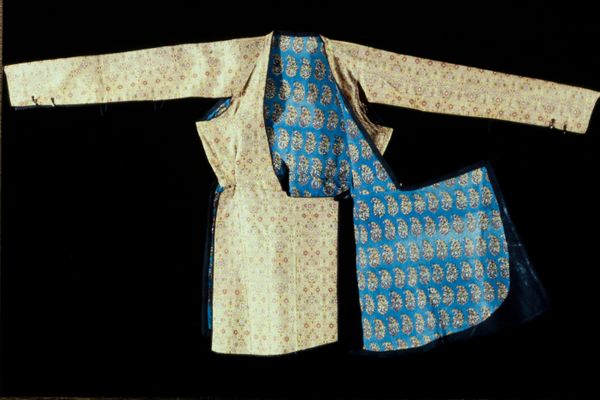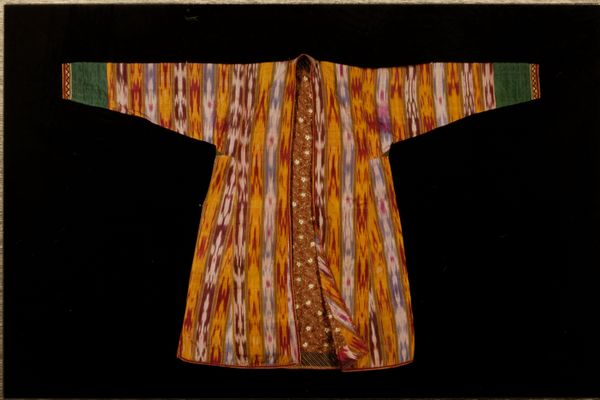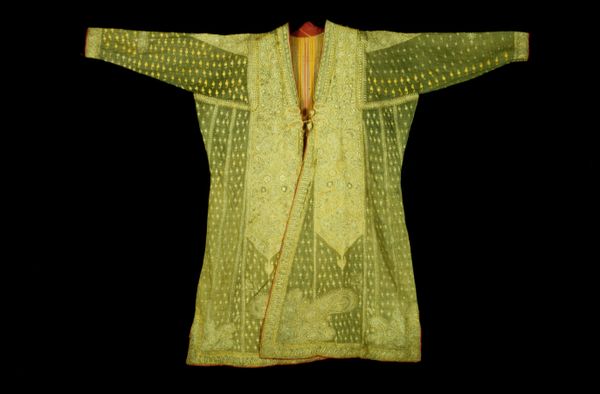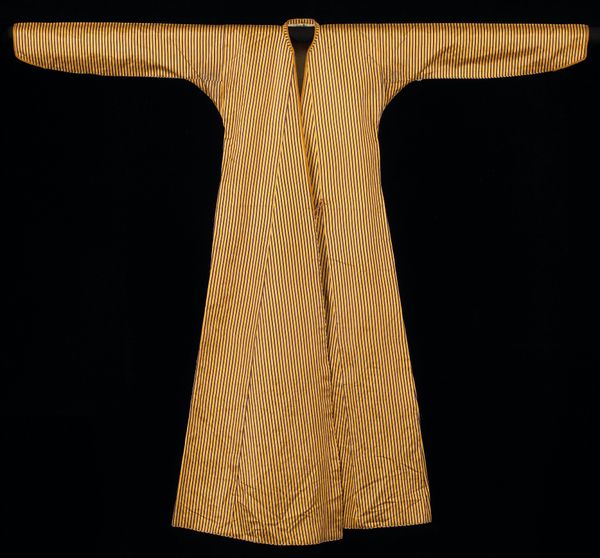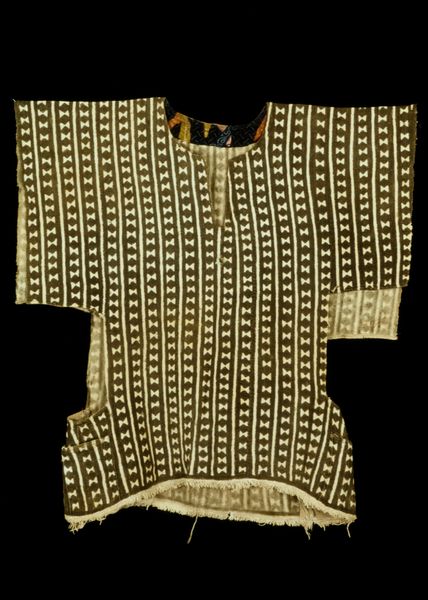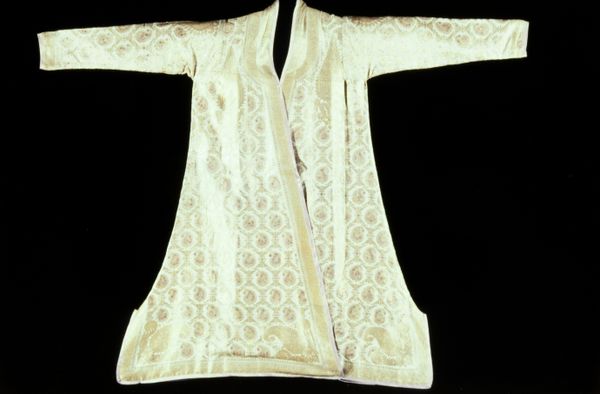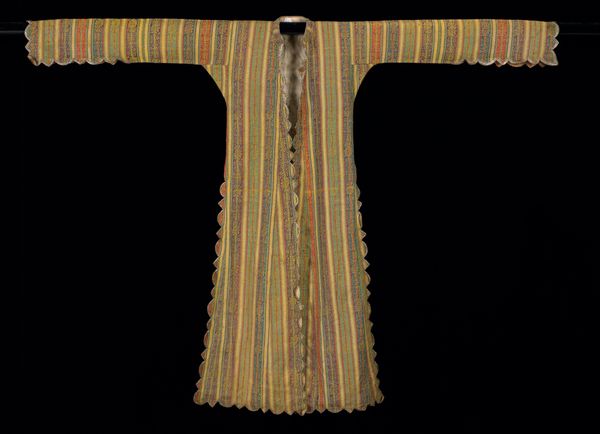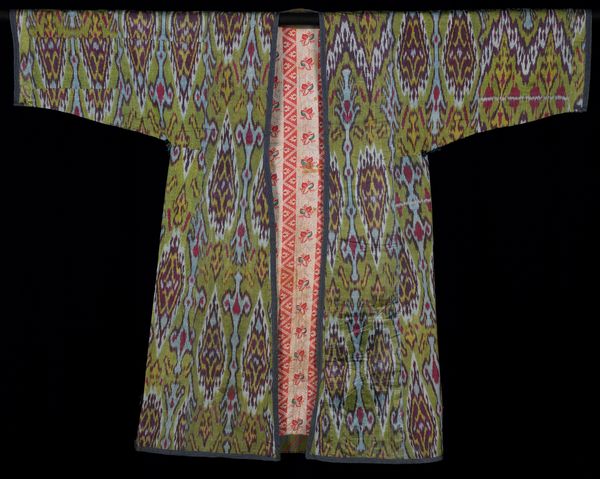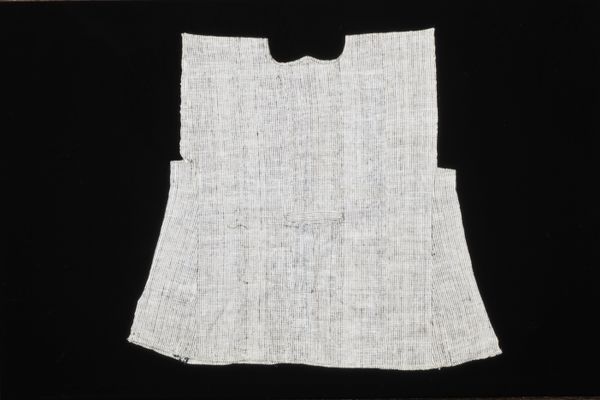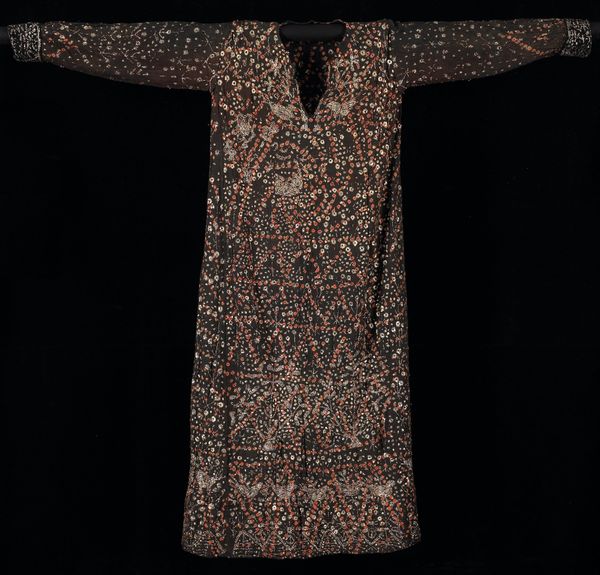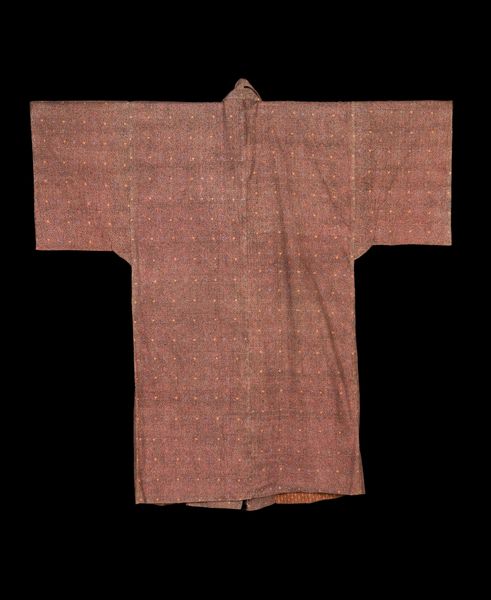
textile
#
fashion design
#
fashion mockup
#
textile
#
collage layering style
#
fashion and textile design
#
hand-embroidered
#
fashion based
#
wearable design
#
fabric design
#
textile design
#
clothing design
Copyright: Public Domain
Curator: Let’s consider this woman's caftan from the 19th century, currently housed at the Minneapolis Institute of Art. These garments tell us so much about trade, class, and the visual culture of their time. Editor: My initial reaction is that it appears both comforting and dignified, almost like a portable sanctuary. I immediately think about the tactile experience of wearing such a hand-embroidered garment. Curator: Indeed. The hand embroidery itself is an interesting detail. Such garments served not just a functional role but also as expressions of status and artistic identity. Depending on its provenance, certain stitching patterns and fabrics may have been encouraged and emulated more in certain locales than in others. Editor: I find the lines particularly striking – they almost create a visual language. Repetition evokes reliability and adherence to pattern. Curator: Patterns, absolutely. If we knew where the piece was made, we might have clues. Certain colors or patterns had symbolic meanings, reflecting beliefs about protection or well-being. More generally, clothing broadcasts wealth, access to goods, and possibly ethnic identity within certain colonial or semi-colonial contexts. Editor: Considering the scale, too; you get the impression of something almost enveloping, hinting at hidden stories or rites of passage embedded in everyday life. Does its wear and tear tell a story of changing ownership, or fluctuating value? Curator: Potentially! Textiles have a biography beyond their aesthetic function. They’re barometers of the social landscape in which they exist. Looking at how garments are collected and displayed today in museums—or their representation within popular media—is part of an ongoing political dialogue about cultural heritage. Editor: I completely agree. By focusing on craftsmanship and social practice we keep these textiles alive; otherwise, garments would sit silent in the archive! Curator: That's right. Understanding objects such as this involves weaving together threads of history, artistry, and cultural significance. Editor: Precisely! Looking closely connects us with a time and culture. That, perhaps, is the lasting power of textiles.
Comments
No comments
Be the first to comment and join the conversation on the ultimate creative platform.
